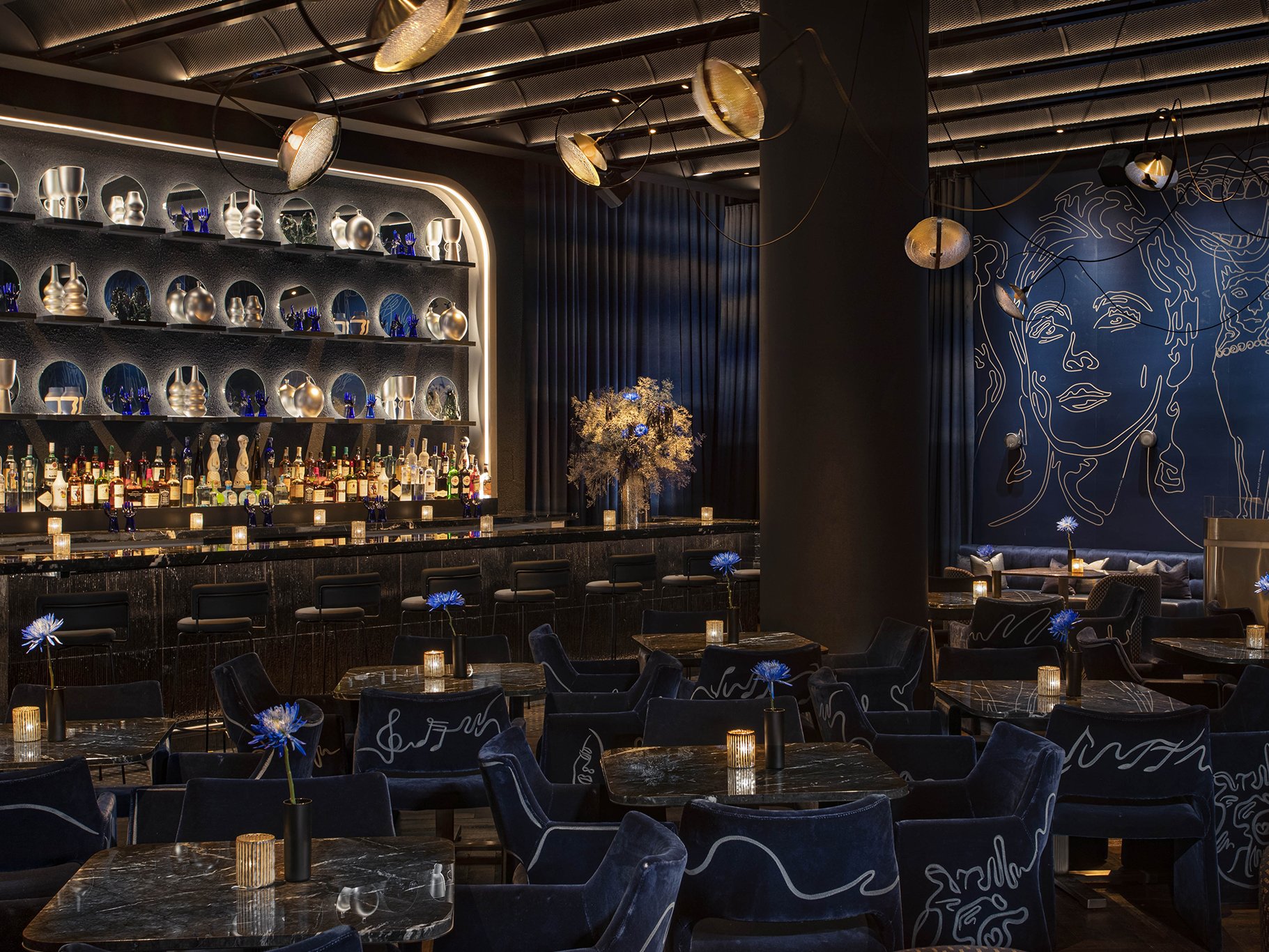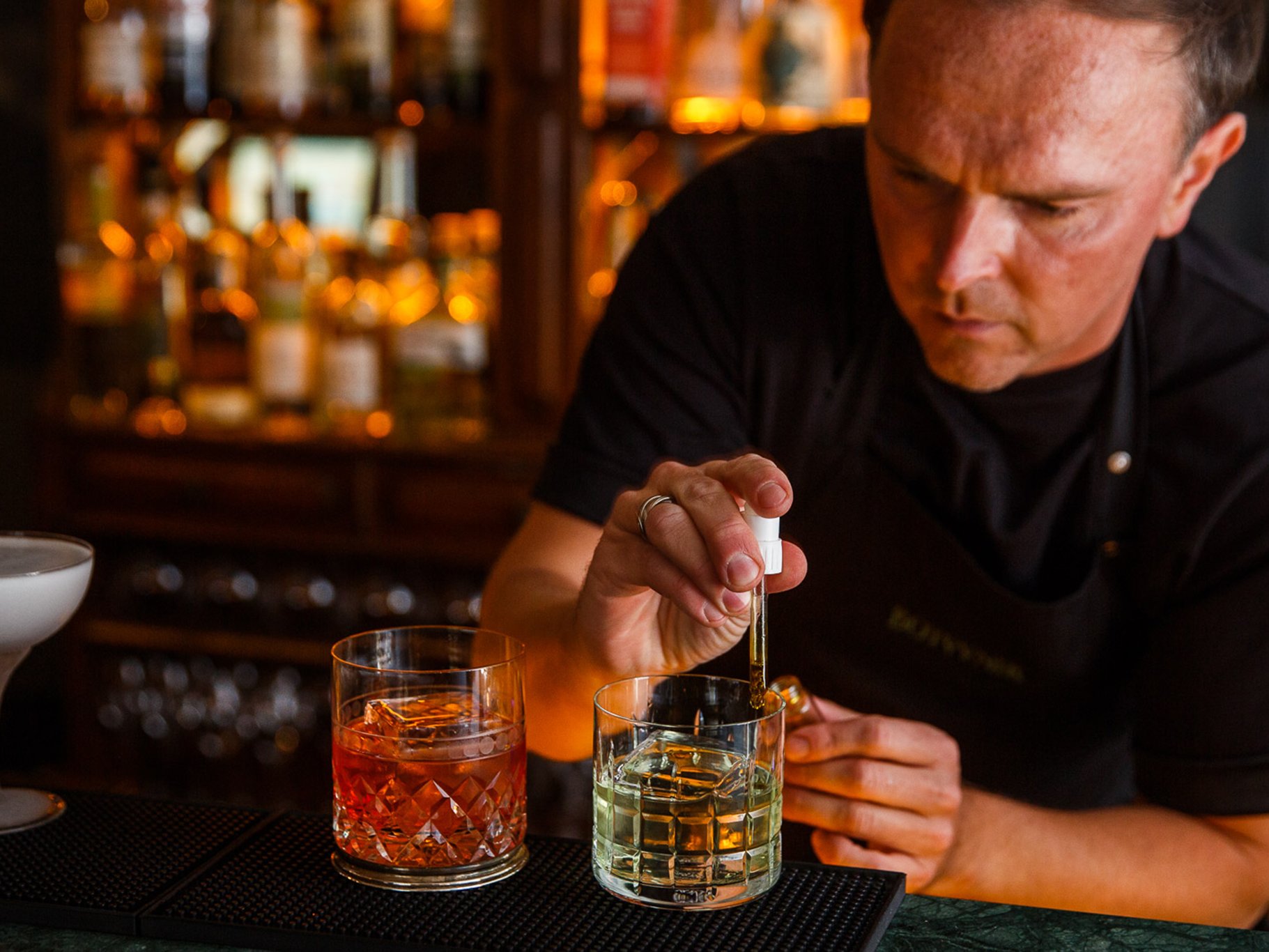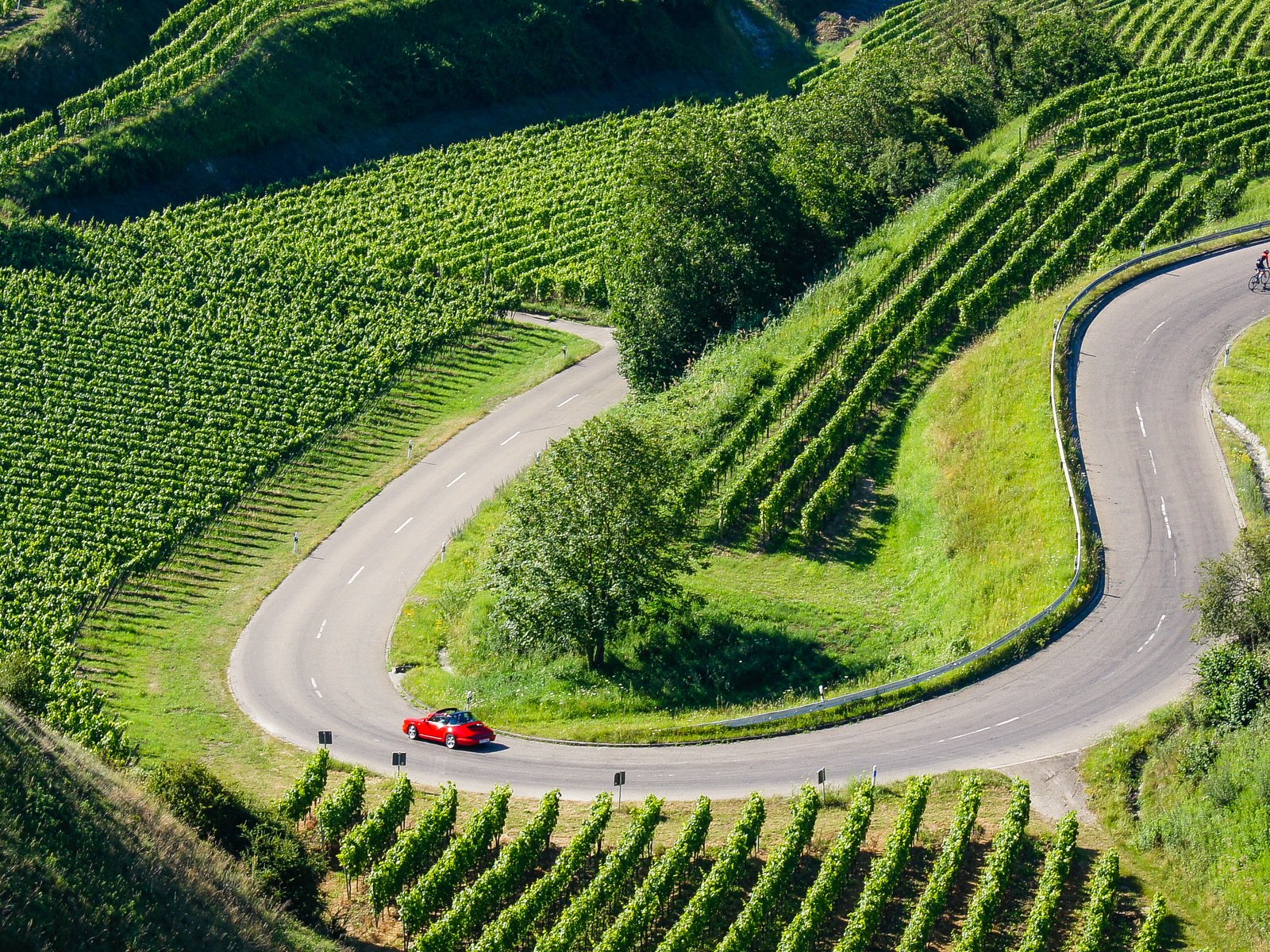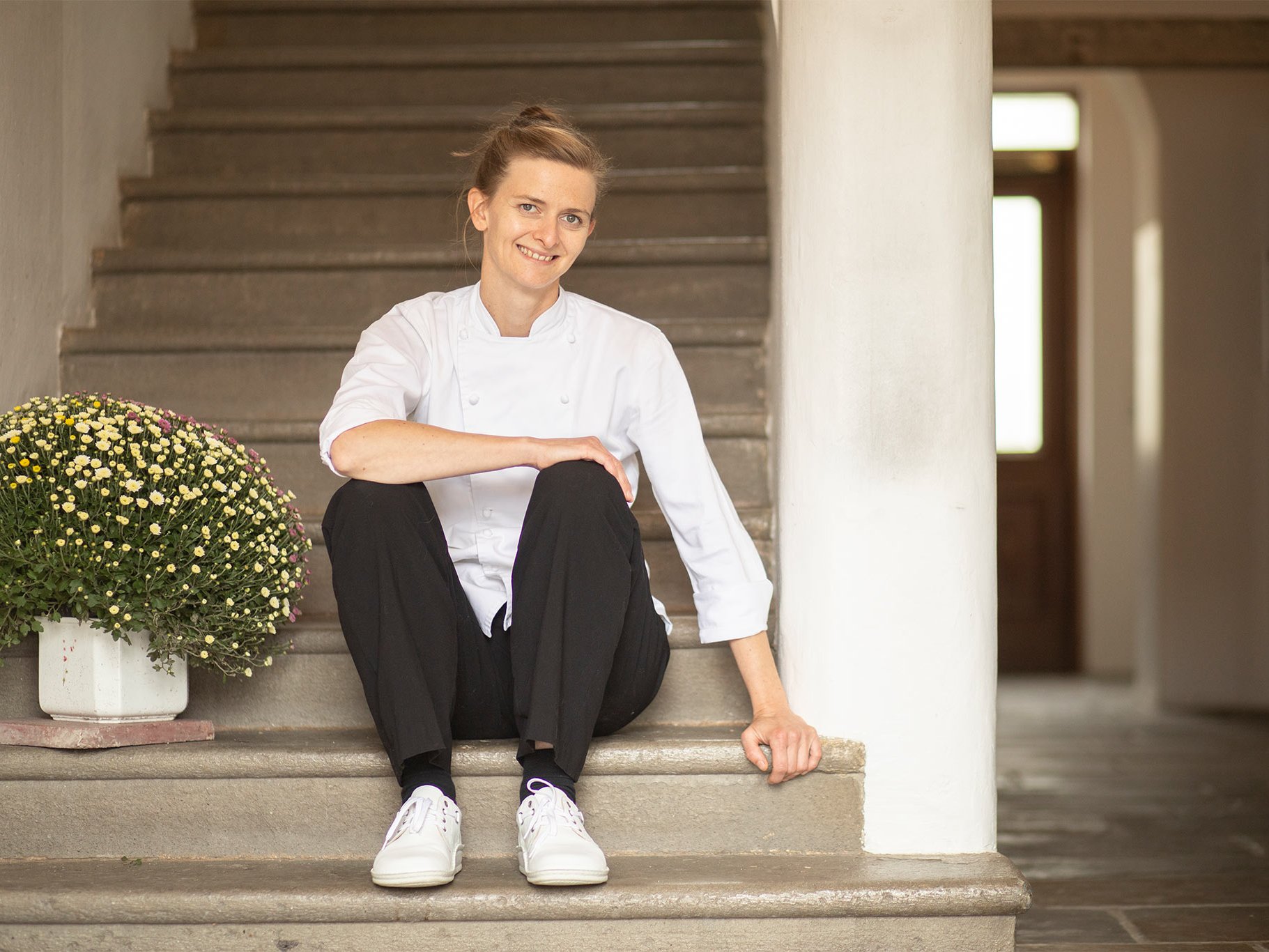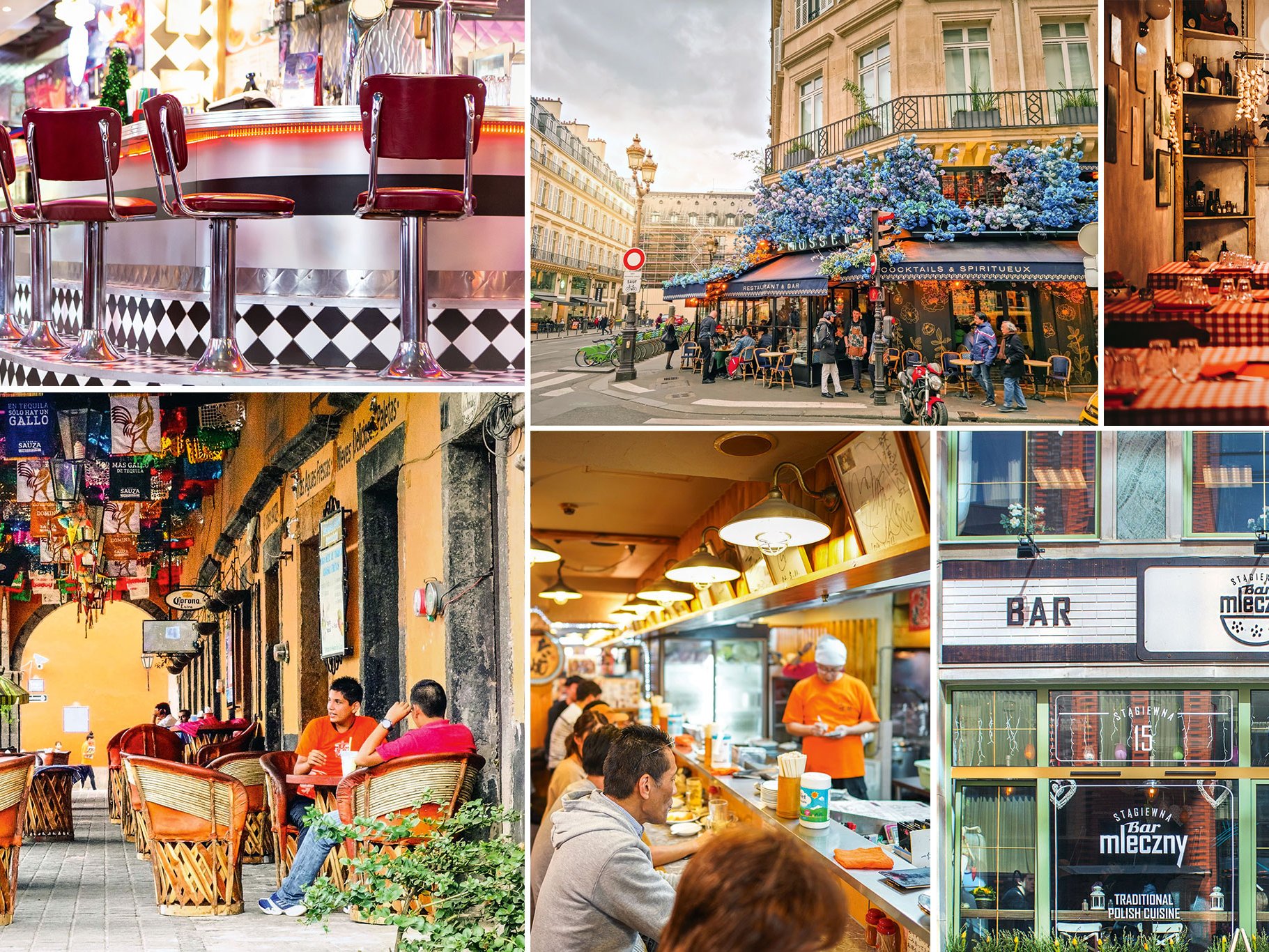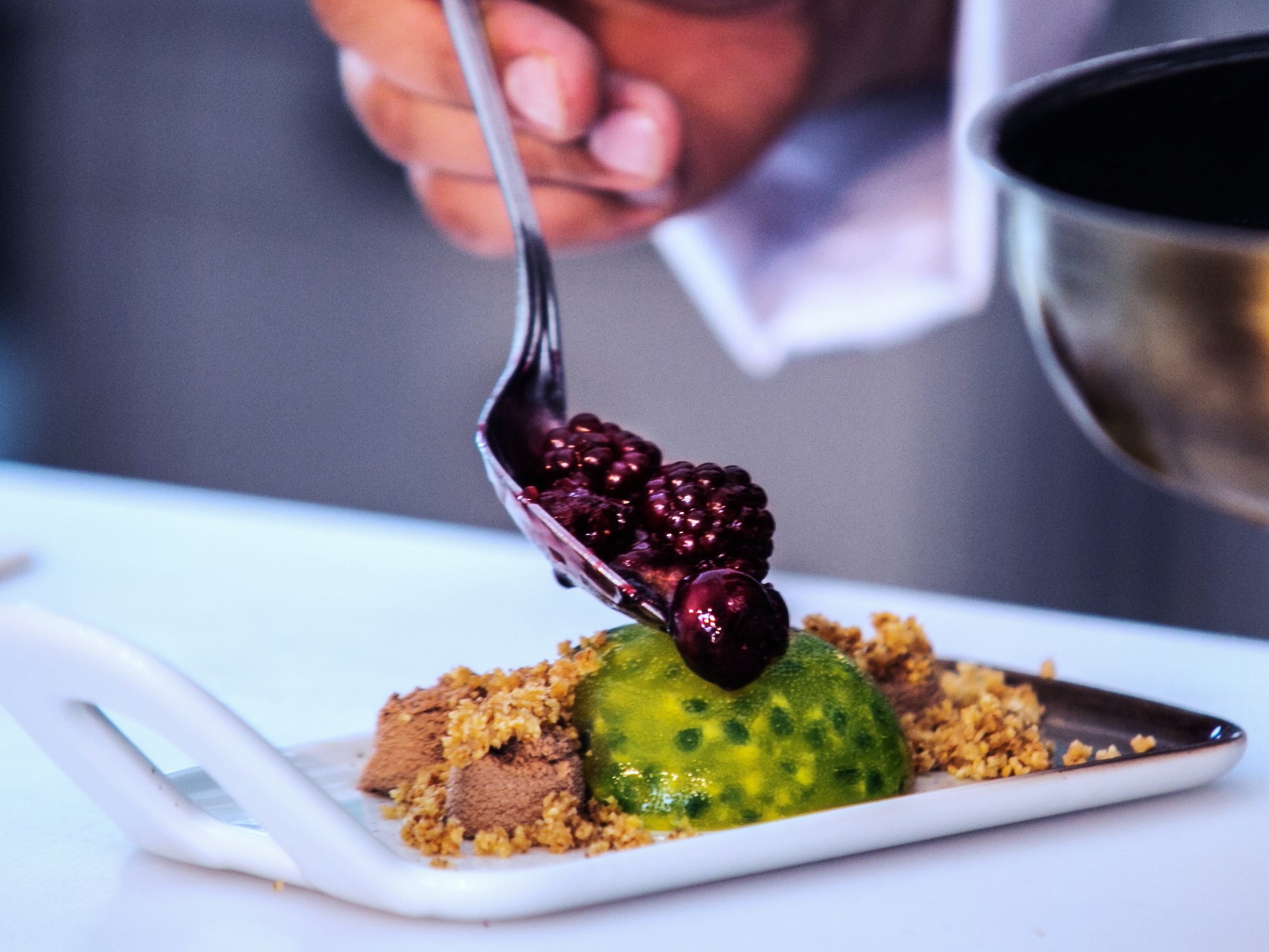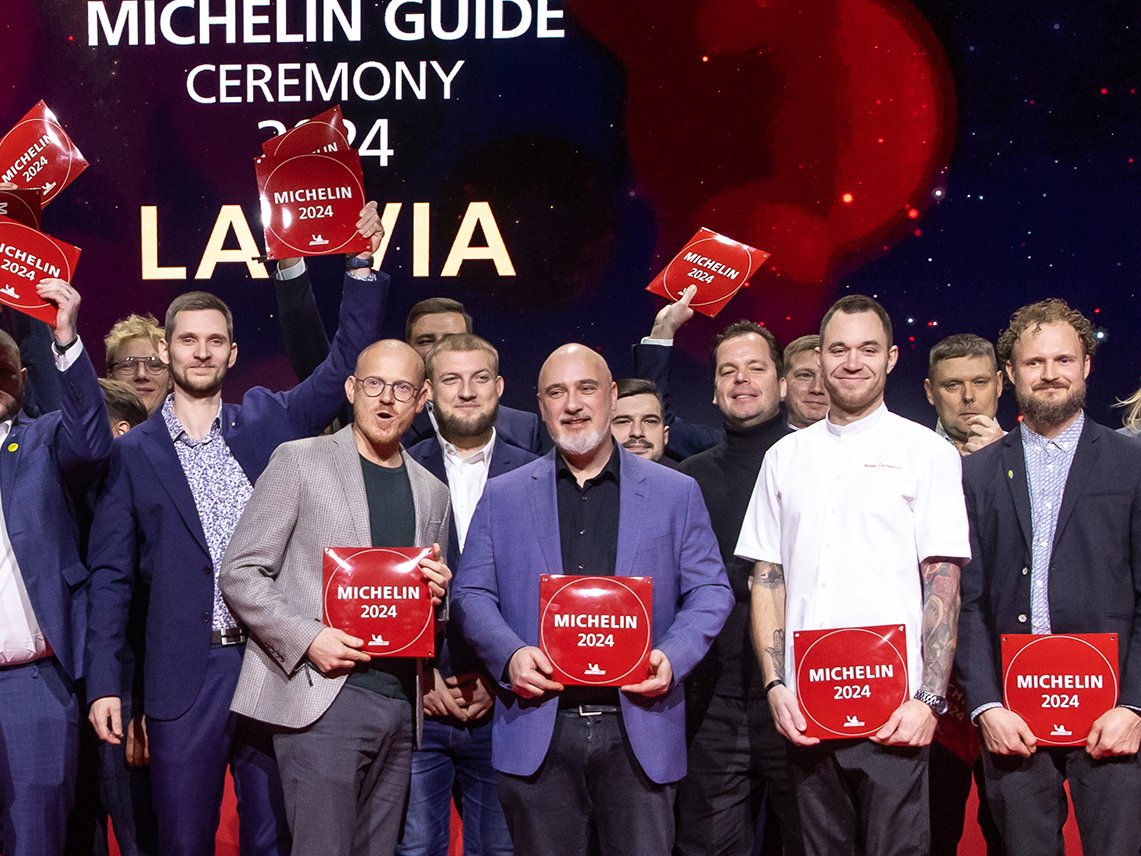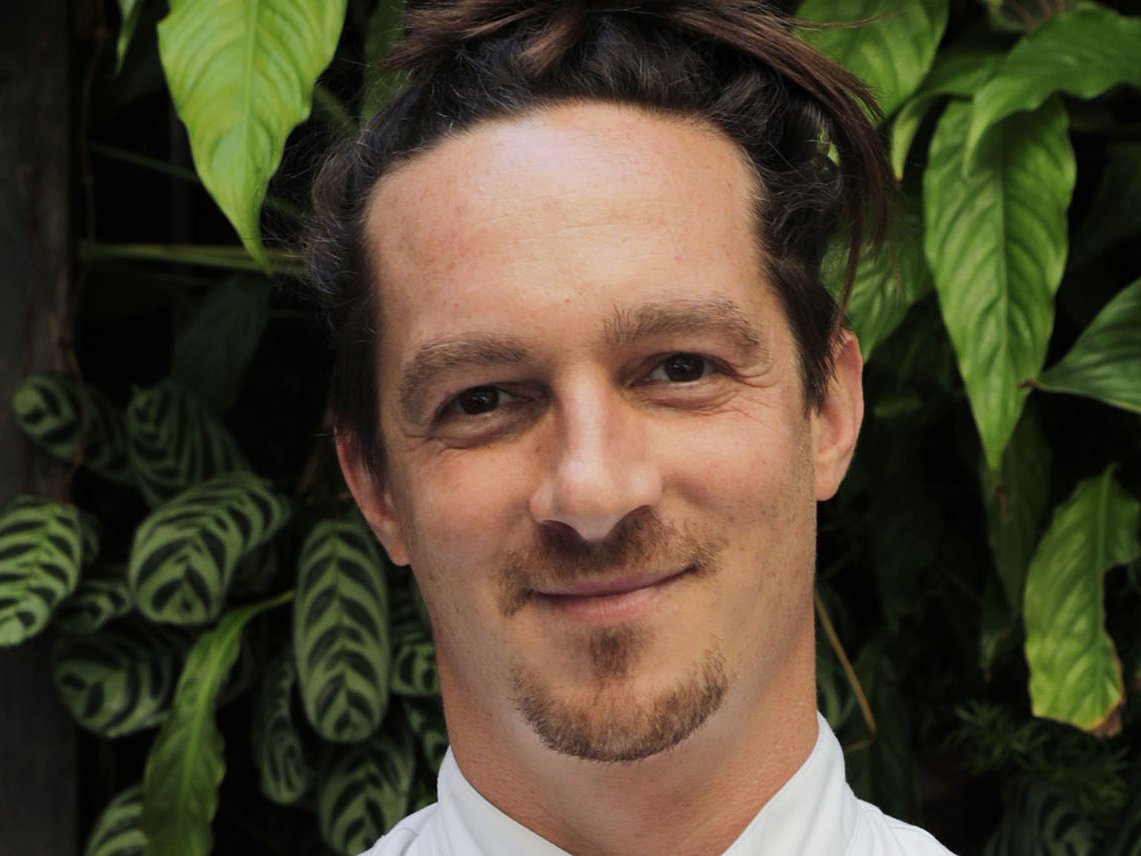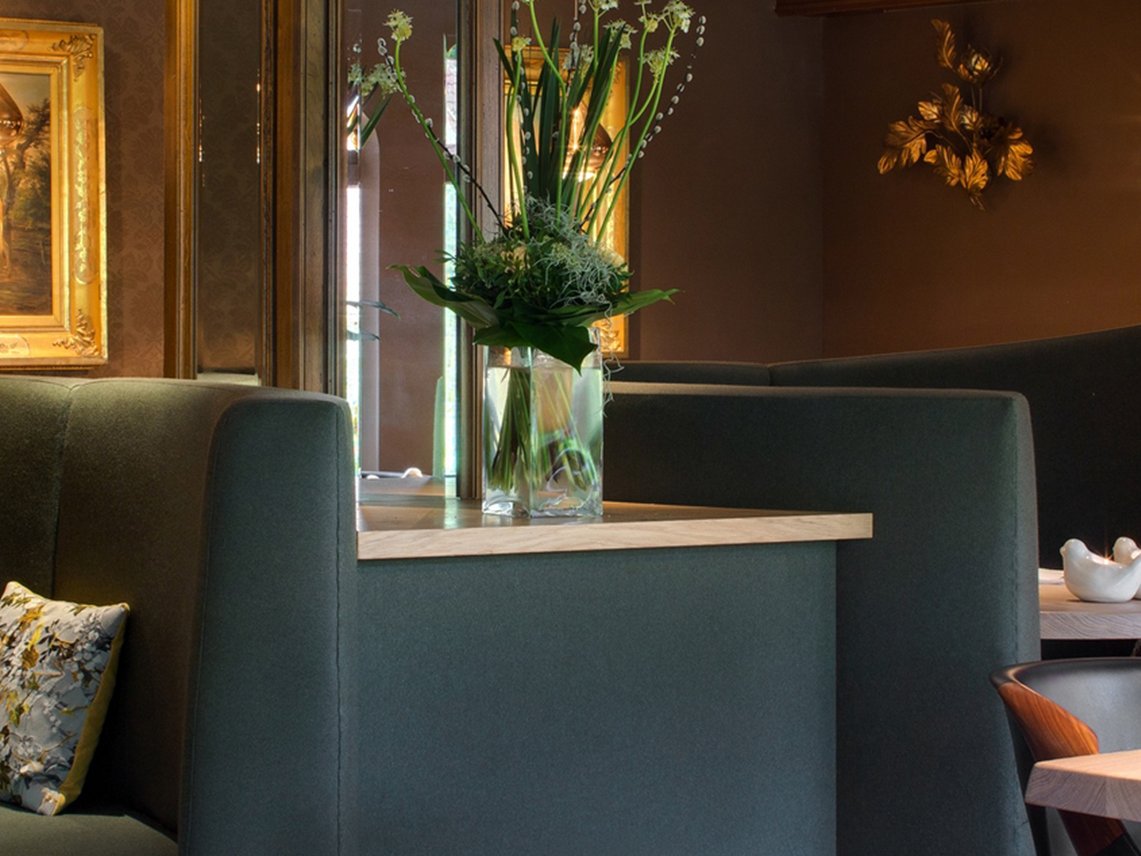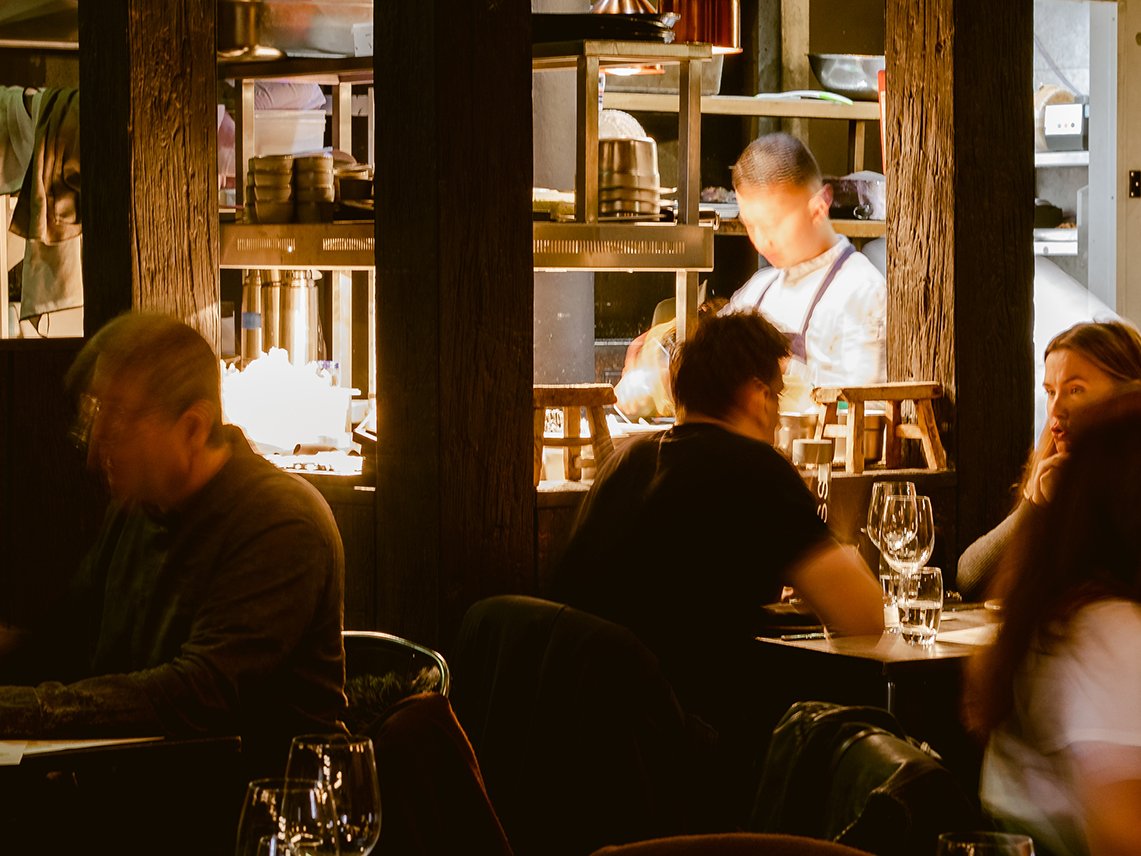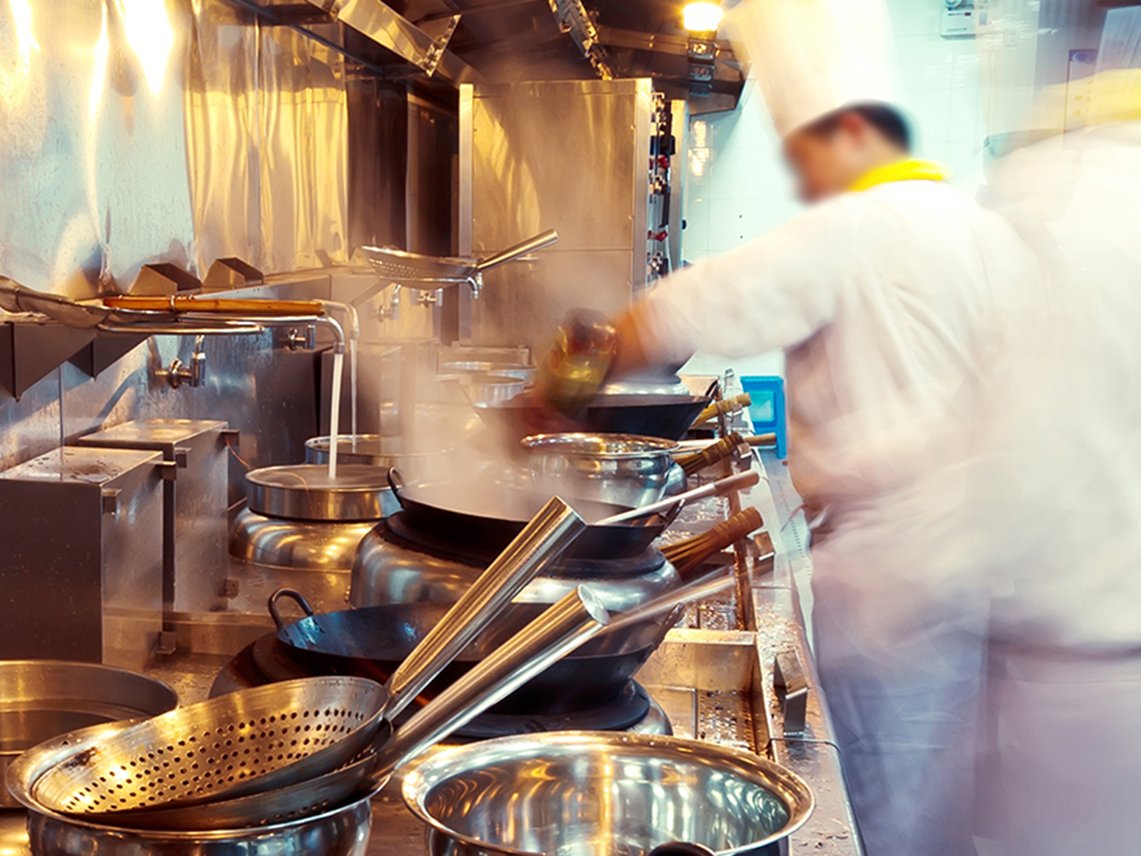Vienna meets Paris at New York City’s Koloman restaurant
Falstaff found out why Koloman has become one of NY’s hottest restaurants.
It was billed as salmon en croute but the vibrant plate in front of me was a far cry from the pale, pastry-dominant affair the dish often can be. Two sunset-hued pieces of fish, framed by layers of green scallop-parley mousseline and sandwiched between slices of tramezzino bread, lay on a burgundy pool of beetroot-beurre rouge sauce. Dainty piles of orange salmon roe popped the colours further and kept the eyes moving around the ceramic canvas. It might be one of the most exciting fish preparations I’ve ever eaten, and it’s a perfect example of why Koloman has become one of New York City’s hottest restaurants.
The restaurant is the vision of Markus Glocker, an Austrian-born, classically French-trained chef. Glocker’s first taste of hospitality came from working in the family hotel, followed by culinary school in Linz before entering the military. With his service completed, he began travelling, first working in renowned restaurant Restaurant Vier Jahreszeiten in Munich, then opening Gordon Ramsey Claridges in London. From there he held positions at 3-Michelin-starred Restaurant Eckart Witzigmann in Berlin; Charlie Trotter’s restaurant in Chicago; and Vienna’s Restaurant Steirereck, before returning to the United States permanently to again work with Gordon Ramsey in New York. In 2014, he struck out on his own and opened the fine-dining restaurant Bâtard with two partners, which earned a Best New Restaurant Award from the James Beard Foundation and a Michelin star.

But in his back pocket, he had an idea for another restaurant. “It’s upbeat,” he says. “It’s young. It’s fresh.” While he loves the flavours of Austrian cuisine, he says the perception is that it’s often heavy or rustic, while French cuisine has elegant nuances, both visually and on the palate. “I thought, what if we can take those flavors and not manipulate them but modernize them and use new techniques to bring Paris and Vienna closer.” That dream came to life in Koloman.
Tafelspitz, reinterpreted
One dish that exemplifies his vision is the Short Rib & Tafelspitz Terrine. Glocker says growing up he and his father would attend church on Sunday and then get tafelspitz (a traditional dish of boiled meats in broth, usually served with potatoes and vegetables). Any leftovers were brought home, and the broth would jellify in the fridge. With the addition of some vinegar and crispy bread, they would finish it off for dinner. At Koloman, he reinterprets this part of his past with different cuts of meat in aspic, layered with vegetables, and wrapped in carrots. A touch of pumpkinseed oil ties it all together. “The terrine is a visual French technique, absolutely. But [the dish] has a lot of familiar flavors for a lot of Austrians. When they eat it, it is a childhood memory, for sure.”

The texture of every dish I tried was finely tuned: cutting into the aforementioned salmon, the fish itself was silky yet firm and perfectly medium-rare, thanks to a salt cure to remove some moisture before cooking. The tramezzino bread that stood in for the pastry yielded a crispy crunch and I sliced my fork tines through it. Tramezzino is a squishy white Italian variety that’s often served crustless, but Glocker brings the crustiness back in full force. Does it even need to be said that the schnitzel is perfect? Its crunchy, greaseless jacket, craggy with air pockets, enshrouds the tender meat. With white asparagus season mere months away, Glocker is already composing dishes in his mind.
Wine program
The wine program, helmed by Katja Scharnagl, follows the Austria-meets-France ethos, with a few other influences sprinkled throughout. Scharnagl grew up in the Wachau Valley in Austria in a winemaking family. At first, she didn’t think wine was her future; she wanted to become a kindergarten teacher. But she failed the entrance exam due to one skill set. “I cannot sing, I have zero musical talent,” she laughs now, but at the time it meant she needed to rethink her future. She decided on culinary school and after working in many wine-centric restaurants, she found her way back to the grape. For many years, she worked at the Burg Vital Hotel in Oberlech, eventually making her way to New York. What was supposed to be just a year working at Le Bernardin, a Michelin 3-starred restaurant, turned into eleven years as Chef Sommelier.
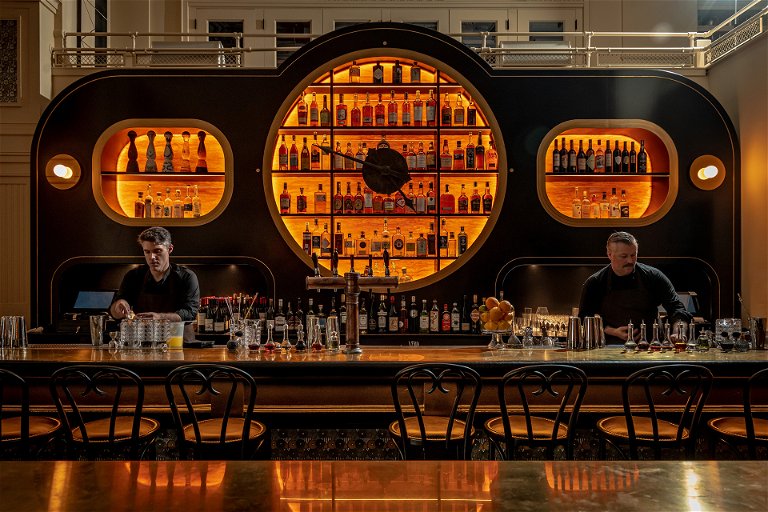
When Scharnagl and Glocker began talking about Koloman’s wine list, they immediately agreed upon Champagne and Burgundy. But she wants to keep the list fresh with unique offerings not widely found. Wines from the Jura, Sancerre with some age on it, a few lesser-known Bordeaux estates, as well as select wines from the U.S. make an appearance. “The wine list for me is always moving,” she says. Austrian wine is obviously central to the list, too, but Scharnagl carries the element of discovery throughout her selections. She recently received an allocation of aged Austrian wines, which she expects to start putting on the list in the next couple of months.
Austria and red wine
The list also presents an opportunity for Scharnagl to spotlight one of Austria’s unsung heroes: Blaufränkisch. In spite of the runaway success of the white grape Gruner Veltliner in the U.S., “A lot of people are surprised Austria makes a red wine,” she says. Ultimately, she’d like to have 150 selections of Blaufränkisch, including rare selections from renowned producer Prieler. She intentionally does not carry blends, Zweigelt, or St. Laurent, instead choosing to highlight the versatility and pairing potential of Blaufränkisch. “I always say it’s as if Pinot Noir and Syrah had a baby,” she says of the grape. “It has spice, great acidity, and freshness. There’s an energy and vibrancy to it.” As we sipped on a Franz Weninger ‘Ried Saybritz’ Blaufränkisch from Burgenland, with its elegant texture and brambly fruit notes throughout various courses, we understood her passion for the grape.
Beyond wine, she’s sharing more of Austria’s gastronomic traditions with an extensive selection of eau de vie. Producers often make it for home consumption, and she wants diners to also enjoy the fruit-based (or sometimes vegetable or nut-based) fermented digestif at the end of a meal.“Just an ounce is enough to finish,” she said. It’s a spirited way to end an evening at New York’s newest hit restaurant.
- Koloman
- 16 W. 29th Street, New York, NY 100001
- : +1.212.790.8970


